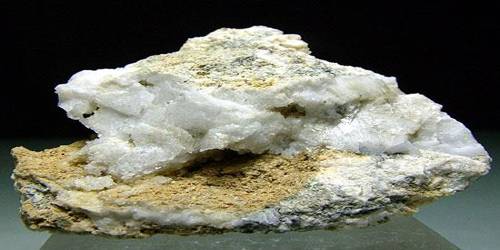Niobite, also known as Columbite, [(Fe, Mn)Nb2O6], is a niobium ore that is black in color. It is a black mineral composed of niobium oxide of iron and manganese in orthorhombic crystalline form that occurs in coarse granite, frequently with tantalite, and is a niobium ore. This mineral group was discovered for the first time in Haddam, Connecticut, in the United States.
General Information
- Category: Oxide minerals
- Formula (repeating unit): Fe2+Nb2O6
- Crystal system: Orthorhombic
- Crystal class: Dipyramidal (mmm)
- Color: Black, brownish black.
Properties
Niobite is an iron and manganese niobate with a submetallic luster and a high density. It is related to the tantalum-dominant analogue ferrotantalite and the manganese-dominant analogue manganocolumbite in a series. Ferrocolumbite is an iron-rich member of the columbite group. The mineral may contain traces of tin and tungsten.
- Crystal habit: Massive – Granular – Common texture observed in granite and other igneous rock; Striated – Parallel lines on crystal surface or cleavage face.
- Cleavage: [010] Distinct
- Fracture: Sub Conchoidal: Fractures developed in brittle materials characterized by semi-curving surfaces.
- Mohs scale hardness: 6
- Luster: sub-metallic
- Streak: blackish brown
- Specific gravity: 5.3–7.3, Average = 6.3
- Optical properties: Biaxial (+), b=2.29–2.4

Niobite is composed of the same elements as tantalite and has the same crystal symmetry (orthorhombic). Tapiolite is also a close relative. These minerals have the same chemical formula but different crystal symmetry: orthorhombic for columbite and tetragonal for tapiolite. The largest documented single crystal of columbite was made up of 6 mm (0.24 in) thick plates measuring 76 cm × 61 cm (30 in × 24 in).
Because niobite contains varying amounts of thorium and uranium, it is radioactive to varying degrees.
Occurrences
The discovery of columbite in the United States was made possible by a specimen originating with John Winthrop (1606–1676), the first Governor of the Connecticut Colony and an avid mineral collector. It was given to Hans Sloane, President of the Royal Society of London, by his namesake and grandson, John Winthrop (1681–1747), among 600 other samples, when he became a Fellow of the Royal Society in 1737.
Charles Hatchett discovered the element niobium in this specimen in 1801 and named it columbium after the explorer Christopher Columbus.
















